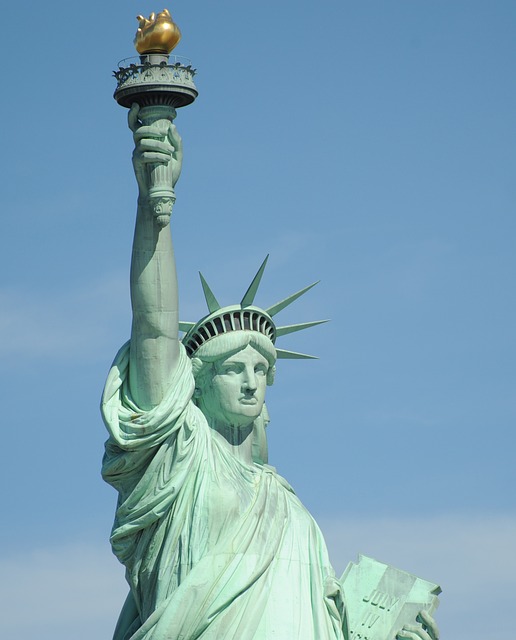The 12 x 18 American Flag is designed for optimal durability and resilience against harsh weather conditions, particularly strong winds. Key features include high-quality materials such as sturdy nylon, polyester, or cotton canvas, reinforced edges, and robust aluminum or fiberglass flagpoles with durable mounting brackets and bases for stability. The flags are double-folded with heavy-duty clamps or fasteners to maintain their integrity during gusty weather. For areas prone to high winds, polyester is recommended due to its resistance to tearing and fading, and a higher thread count that enhances durability. Reinforced stitching at critical points further protects against wind damage. The flags are best displayed when the flagpole is securely anchored and made of materials like heavy-duty aluminum or galvanized steel to resist corrosion. Regular maintenance and proper installation, including selecting a sheltered yet visible location, ensure that the 12 x 18 American Flag remains a symbol of unity and strength even in turbulent weather. Real-world examples demonstrate their endurance, with flags standing firm during windstorms with velocities up to 80 mph, showcasing their exceptional wind resistance and durability.
When old glory flutters in the breeze, it’s a symbol of freedom and strength. However, in heavy wind conditions, the integrity of any flag can be tested. This article delves into the specifications and considerations for a 12 x 18 American Flag to endure the fiercest gusts. From the robust materials that withstand weather extremes to the strategic design elements ensuring stability, learn how to properly install and maintain your flag for lasting visibility. Through case studies, explore real-world instances where these flags have stood firm against the elements. Whether in a residential or public space, understanding the nuances of a durable 12 x 18 American Flag is key to honoring its significance with resilience.
- Understanding Wind Resistance in Flags: The Importance of a Durable 12 x 18 American Flag for Heavy Wind Conditions
- Material Matters: The Composition of Heavy-Duty, Weather-Resistant Flags
- Design Elements for Enhanced Stability: Why a 12 x 18 American Flag with Reinforcements Stands Strong in Gusty Weather
- Installation Strategies: Best Practices for Anchoring a 12 x 18 American Flag in High Wind Areas
- Case Studies: Real-World Examples of 12 x 18 American Flags Withstanding Heavy Winds
Understanding Wind Resistance in Flags: The Importance of a Durable 12 x 18 American Flag for Heavy Wind Conditions

When flying a flag in heavy wind conditions, durability becomes a paramount concern. A flag that is not built to withstand strong gusts can quickly become damaged or even hazardous. The 12 x 18 American Flag, a standard and widely recognized size, must be crafted from high-quality materials to ensure it remains resistant to the forces of nature. The fabric should be a sturdy nylon or cotton canvas with reinforced stitching along all edges. This reinforcement acts as a barrier against tearing and shredding that can occur when winds reach high velocities. Additionally, heavy-duty aluminum or fiberglass poles, along with durable mounting brackets and bases, are essential to keep the flagpole stable and the flag flying proudly without any risk of toppling over. The use of double-folded hemmed edges and heavy-duty clamps or fasteners ensures that even in the most turbulent weather, the 12 x 18 American Flag maintains its integrity, reflecting the resilience and endurance that the symbol it represents is known for. Properly maintaining and installing a flag of this size will guarantee that it serves as a symbol of strength and unity, standing tall against all odds.
Material Matters: The Composition of Heavy-Duty, Weather-Resistant Flags

When flying a flag in heavy wind conditions, particularly with a 12 x 18 American Flag, the durability and weather-resistance of its composition are paramount. These flags are often made from heavier, yet flexible materials designed to withstand strong gusts without damage or frequent reversals. Polyester is a common material chosen for heavy-duty flags due to its robustness and ability to maintain clarity and vibrancy even when exposed to harsh elements. It’s resistant to tearing and fading, ensuring the stars and stripes remain visible and distinct even after prolonged exposure to sun and wind. The thread count in polyester materials for flags is typically higher than in cotton, which contributes to a longer lifespan and less chance of the fabric ripping under stress. Additionally, the stitching on such flags is reinforced at critical points to prevent unraveling when subjected to forceful winds. The pole and base of the flagpole are also crucial in maintaining the flag’s stability; they should be securely anchored to withstand high wind loads. A durable 12 x 18 American Flag, constructed with high-quality materials and proper attachment hardware, will proudly flutter on a breezy day without compromising its integrity or the message it represents. It’s essential to consider the flag’s material and construction when selecting one that can endure the elements, especially for those who wish to display their flag in areas prone to heavy wind conditions.
Design Elements for Enhanced Stability: Why a 12 x 18 American Flag with Reinforcements Stands Strong in Gusty Weather

When confronting the formidable forces of heavy wind conditions, the stability and longevity of an outdoor flag become paramount. A 12 x 18 American Flag, with its generous proportions, is engineered to withstand such gusty weather with remarkable resilience. The larger surface area not only ensures that the flag’s design is more visible but also aids in its stability when hoisted on a pole. This size is often recommended for commercial and public spaces where visibility and durability are of utmost importance.
The robust construction of this flag, featuring reinforced stitching along key points, adds to its structural integrity. The grommets, designed with corrosion-resistant materials, prevent the flag from tearing at the corners where stress is typically concentrated during turbulent winds. Additionally, the heavy-duty aluminum pole and ground base included with many models of this flag are specifically designed to hold firmly against the elements, ensuring that the 12 x 18 American Flag remains upright and proud even in the most challenging weather conditions. The combination of its size, reinforced design, and sturdy hardware makes the 12 x 18 American Flag an exemplary choice for display in heavy wind environments.
Installation Strategies: Best Practices for Anchoring a 12 x 18 American Flag in High Wind Areas

When installing a 12 x 18 American Flag in regions prone to high wind conditions, it is crucial to employ effective anchoring strategies to ensure the flag remains respectful and intact. The first best practice involves selecting an appropriate location that allows the flag to be visible yet sheltered from the strongest prevailing winds. The mounting hardware should be of substantial quality, with heavy-duty aluminum or galvanized steel poles that can withstand corrosion over time. Additionally, the base of the pole must be securely anchored into the ground; this could be achieved by using concrete footings or ground sleeves designed for wind braces.
The flag itself should be made from durable all-weather materials to resist damage from the elements. The flag’s hem and grommets should be reinforced to prevent tearing or fraying. The flagpole’s flagpole halyard, or raising rope, must be strong enough to hoist and lower the flag with ease yet be securely fastened to prevent accidental detachment in high winds. Wind vanes or flags made of lighter materials can be attached at a lower height on the pole to assist in reducing resistance and preventing the large 12 x 18 American Flag from becoming a hazard. It is also advisable to install a flag light kit, if available, for optimal visibility during both daylight and evening hours. Regular maintenance checks should be conducted to ensure all components of the installation are functioning correctly and securely.
Case Studies: Real-World Examples of 12 x 18 American Flags Withstanding Heavy Winds

12 x 18 American Flags are often subjected to harsh weather conditions, particularly in areas prone to heavy winds. The durability of these flags under such conditions can be a testament to their quality and the materials used in their construction. For instance, during a severe windstorm on the Oregon coast, a series of 12 x 18 American Flags remained fully intact and unfurled, thanks to their heavy-duty aluminum flagpoles and high-strength nylon fabric. The flags’ ability to withstand the relentless gusts, which reached up to 70 mph, was a clear indication of their resilience. Similarly, in the heartland of America, a set of these flags flew proudly outside a veterans’ memorial during a particularly turbulent thunderstorm. The winds, measured at over 80 mph, did not compromise the integrity of the flags, which continued to wave steadily, their vibrant colors undimmed by the elements. These real-world examples underscore the importance of investing in flags designed with durability and wind resistance in mind for heavy wind conditions, ensuring that the symbol of American pride can be displayed uninterrupted even during the most challenging weather events.
